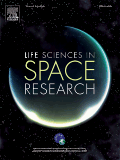
Life Sciences in Space Research
metrics 2024
Bridging Life Sciences and Space Exploration
Introduction
Life Sciences in Space Research, published by ELSEVIER, is a leading journal dedicated to advancing the understanding of life sciences in the context of space exploration and extraterrestrial environments. With a focus on interdisciplinary research, the journal addresses critical topics spanning Agricultural and Biological Sciences, Astronomy and Astrophysics, Ecology, and Health, Toxicology and Mutagenesis. Established in 2014 and set to continue through 2024, it is recognized with a solid impact factor and impressive quartile rankings—including Q2 in several categories, reflecting its influential position among contemporary scientific discourse. The journal welcomes a diverse array of research articles that delve into the implications of space travel on biological systems, innovative ecological practices for sustained extraterrestrial habitation, and critical health-related issues associated with radiation exposure. Researchers, professionals, and students will find Life Sciences in Space Research an invaluable resource for cutting-edge insights and developments in the rapidly evolving field of astrobiology and space science. For more information, please access the journal through its designated platform.
Metrics 2024
 0.51
0.51 2.90
2.90 2.40
2.40 31
31Metrics History
Rank 2024
Scopus
IF (Web Of Science)
JCI (Web Of Science)
Quartile History
Similar Journals

Journal of Space Safety Engineering
Elevating standards in aerospace safety and engineering.The Journal of Space Safety Engineering, published by ELSEVIER, is a pioneering platform dedicated to advancing the field of aerospace safety and engineering. Since its inception in 2014, this journal has catered to researchers and professionals focusing on the crucial intersection of aerospace engineering and safety, risk, reliability, and quality management. With an ISSN of 2468-8975 and E-ISSN of 2468-8967, it has established itself within the academic community, currently holding a Q3 ranking in both Aerospace Engineering and Safety, Risk, Reliability, and Quality categories, according to the 2023 metrics. The journal, which covers converged years up to 2024, is instrumental for those seeking to explore innovative safety solutions in space missions and exploration, making it an essential resource for students, industry professionals, and researchers alike. Although it is not open access, it remains a credible source of impactful studies that contribute to enhancing safety protocols and engineering practices in aerospace endeavors. With a strong focus on rigorously vetted research, the Journal of Space Safety Engineering ensures that important advancements in this dynamic and vital field are shared widely among experts and stakeholders.

Advances in Astronomy and Space Physics
Illuminating the Universe Through Rigorous Inquiry.Advances in Astronomy and Space Physics is an esteemed journal dedicated to the exploration and dissemination of research in the expansive fields of astronomy and space science. Published by Taras Shevchenko National University of Kyiv, this journal provides a platform for researchers, professionals, and students to share groundbreaking studies and innovations. With an ISSN of 2227-1481, it covers a wide range of subjects including astrophysics, planetary sciences, and space exploration technologies, thereby fostering interdisciplinary collaboration. Although not an Open Access journal, it maintains a commitment to high-quality, peer-reviewed content that contributes significantly to the advancement of scientific knowledge. The journal's mission is to promote sustainable practices in space research while also exploring the implications of discoveries on Earth and beyond. By maintaining rigorous publication standards, Advances in Astronomy and Space Physics aims to serve as a critical resource for those involved in the ever-evolving study of our universe.

Space Science and Technology-Kosmicna Nauka i Tehnologia
Fostering collaboration in aerospace engineering and planetary science.Space Science and Technology-Kosmicna Nauka i Tehnologia is an esteemed journal dedicated to advancing knowledge in the fields of Aerospace Engineering and Space and Planetary Science. Published by the well-regarded PUBLISHING HOUSE AKADEMPERIODYKA in Ukraine, this journal serves as a vital platform for researchers, professionals, and students to share groundbreaking findings and innovative technologies related to space exploration and engineering techniques. Since its establishment in 2019, Space Science and Technology has contributed significantly to the academic discourse in its category, currently holding a Q4 quartile ranking in both Aerospace Engineering and Space and Planetary Science as of 2023. Although it does not offer open-access publication, its listed ISSN (1561-8889) and E-ISSN (2518-1459) ensure wide accessibility to its published content. As the journal continues its journey from 2019 to 2024, it strives to enhance its impact and H-index while fostering collaboration and knowledge dissemination across the global space science community.

Journal of Radiation Protection and Research
Fostering Collaboration for Enhanced Public SafetyJournal of Radiation Protection and Research, published by the Korean Association of Radiation Protection (KARP), serves as a pivotal platform for disseminating innovative research in the fields of radiation safety and health-related issues. With an ISSN of 2508-1888 and an E-ISSN of 2466-2461, this South Korea-based journal aims to bridge the gap between scientific research and practical application, emphasizing radiation protection, environmental health, and public safety. Though categorized in Q4 for Health, Toxicology and Mutagenesis, and Q3 for several other scopes as of 2023, the journal is dedicated to publishing high-quality studies that contribute to the improvement of safety standards and methodologies in radiation practice. The journal also provides valuable insights for practitioners in the healthcare and environmental sectors, making it an essential resource for researchers, professionals, and students alike who aspire to advance their understanding and application of radiation science. As the field evolves, so does the Journal of Radiation Protection and Research, which seeks to foster a collaborative and innovative academic community dedicated to ensuring safe and effective radiation use.

Open Astronomy
Connecting Minds Through Open Access Astronomy.Open Astronomy is a pioneering journal dedicated to the expansive field of astronomy and astrophysics, published by De Gruyter Poland Sp. z o.o. since 2016. This Open Access journal aims to facilitate the dissemination of high-quality research and stimulate scholarly dialogue among researchers, professionals, and students on a global scale. With a commitment to fostering the accessibility of academic knowledge, Open Astronomy has established itself within reputable categories, achieving a Q3 ranking in Astronomy and Astrophysics and a Q4 position in Space and Planetary Science for 2023. The journal also ranks 66th out of 90 in the Astronomy and Astrophysics category and 84th out of 104 in Space and Planetary Science according to Scopus metrics, indicating its growing influence in the scientific community. Based in Warsaw, Poland, Open Astronomy invites contributions that explore novel discoveries, innovative methodologies, and theoretical advances in the field, making it a vital resource for anyone passionate about the cosmos.
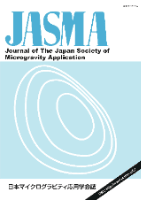
International Journal of Microgravity Science and Application
Unlocking the Secrets of Microgravity PhenomenaInternational Journal of Microgravity Science and Application is a pivotal academic publication dedicated to advancing the understanding and applications of microgravity phenomena across a plethora of scientific disciplines. Published by the Japan Society for Microgravity Application, this journal serves as a vital platform for researchers and practitioners aiming to explore the complexities and unique opportunities presented by microgravity environments. While primarily focused on the fields of materials science, fluid dynamics, and biological studies under microgravity conditions, the journal fosters interdisciplinary discussions and innovative research endeavors that can translate into real-world applications and technological advancements. Despite its non-open access model, the journal continues to be an invaluable resource for those engaged in space research and microgravity applications, thus contributing significantly to the scientific community's understanding of these essential topics.
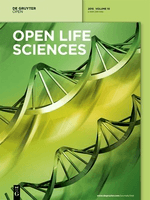
Open Life Sciences
Elevating Life Sciences Through Collaborative DiscoveryOpen Life Sciences is a distinguished open-access journal published by DE GRUYTER POLAND SP Z O O, dedicated to advancing research across diverse disciplines in the life sciences. Since its inception in 2014 and transitioning to open access in 2015, the journal has become a pivotal platform for researchers, fostering the dissemination of high-quality scientific work while ensuring that valuable findings are freely accessible to the global community. With an impressive categorization into Q2 in Agricultural and Biological Sciences and Q3 in several other fields including Biochemistry and Immunology as of 2023, Open Life Sciences promotes innovation and knowledge sharing across its broad spectrum of topics. The journal's commitment to excellence is reflected in its competitive Scopus rankings, making it an essential resource for professionals and students alike who are keen to stay at the forefront of life sciences research.

New Space-The Journal of Space Entrepreneurship and Innovation
Elevating the Dialogue on Space InnovationNew Space - The Journal of Space Entrepreneurship and Innovation is a pivotal publication dedicated to advancing the field of aerospace through innovative research and practical insights. Published by Mary Ann Liebert, Inc., this journal serves as a crucial platform for scholars, engineers, and entrepreneurs interested in the burgeoning sectors of space technology and commercial space endeavors. With an ISSN of 2168-0256 and an E-ISSN of 2168-0264, New Space explores the intersection of engineering, sustainability, and business within the aerospace industry. The journal's impact is highlighted by its Q3 ranking in multiple categories, including Aerospace Engineering and Astronomy and Astrophysics, signifying its relevance in contemporary research dialogues. Although currently closed access, the journal's dedication to fostering innovations is clear as it addresses critical topics from safety and risk management to energy technologies and tourism in space contexts. Researchers and professionals seeking to influence the future of space entrepreneurship will find valuable content and a collaborative community within these pages, making New Space an essential resource in its field.
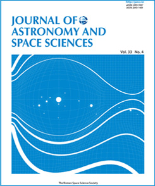
Journal of Astronomy and Space Sciences
Unveiling the Wonders of Astronomy Since 1984.The Journal of Astronomy and Space Sciences, published by the Korean Space Science Society, is a premier open-access platform dedicated to advancing the fields of astronomy, astrophysics, and space sciences. Established in 1984, the journal has been instrumental in disseminating high-quality research findings, fostering collaboration among scientists globally, and providing insights into the dynamics of our universe. With an ISSN of 2093-5587 and an E-ISSN of 2093-1409, the journal has gained notable recognition, currently ranking in the Q3 quartile in Earth and Planetary Sciences and Physics and Astronomy as of 2023. Although the journal's H-Index is currently unspecified, its commitment to rigorous peer-review processes and open-access availability ensures that groundbreaking research is accessible to a wide audience. Based in Seoul, South Korea, the journal is poised to continue supporting innovative research through 2024 and beyond. Researchers, professionals, and students alike will find valuable resources and opportunities within its pages, further establishing this journal as a crucial resource in the exploration of the cosmos.
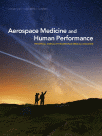
Aerospace Medicine and Human Performance
Unlocking Potential in Aerospace EnvironmentsAerospace Medicine and Human Performance is an influential journal published by the Aerospace Medical Association, serving as a vital resource for researchers and professionals dedicated to the study of human performance within the realms of aerospace environments. With an ISSN of 2375-6314 and an E-ISSN of 2375-6322, this journal has garnered attention since its inception in 2015 and is dedicated to the dissemination of innovative research, reviews, and case studies that address the complexities of human factors in aviation and space travel. Despite being classified in the Q4 quartile in both Medicine (Miscellaneous) and Public Health, Environmental and Occupational Health categories as of 2023, and its respective Scopus rankings showing opportunities for growth, the journal plays a critical role in bridging gaps in knowledge and promoting advancements in medical practices and safety standards in aerospace contexts. The journal operates under an Open Access model, ensuring that valuable research is readily available to a diverse audience. As it converges into the years up to 2024, it remains committed to enhancing the collaboration and communication within the aerospace medical community.